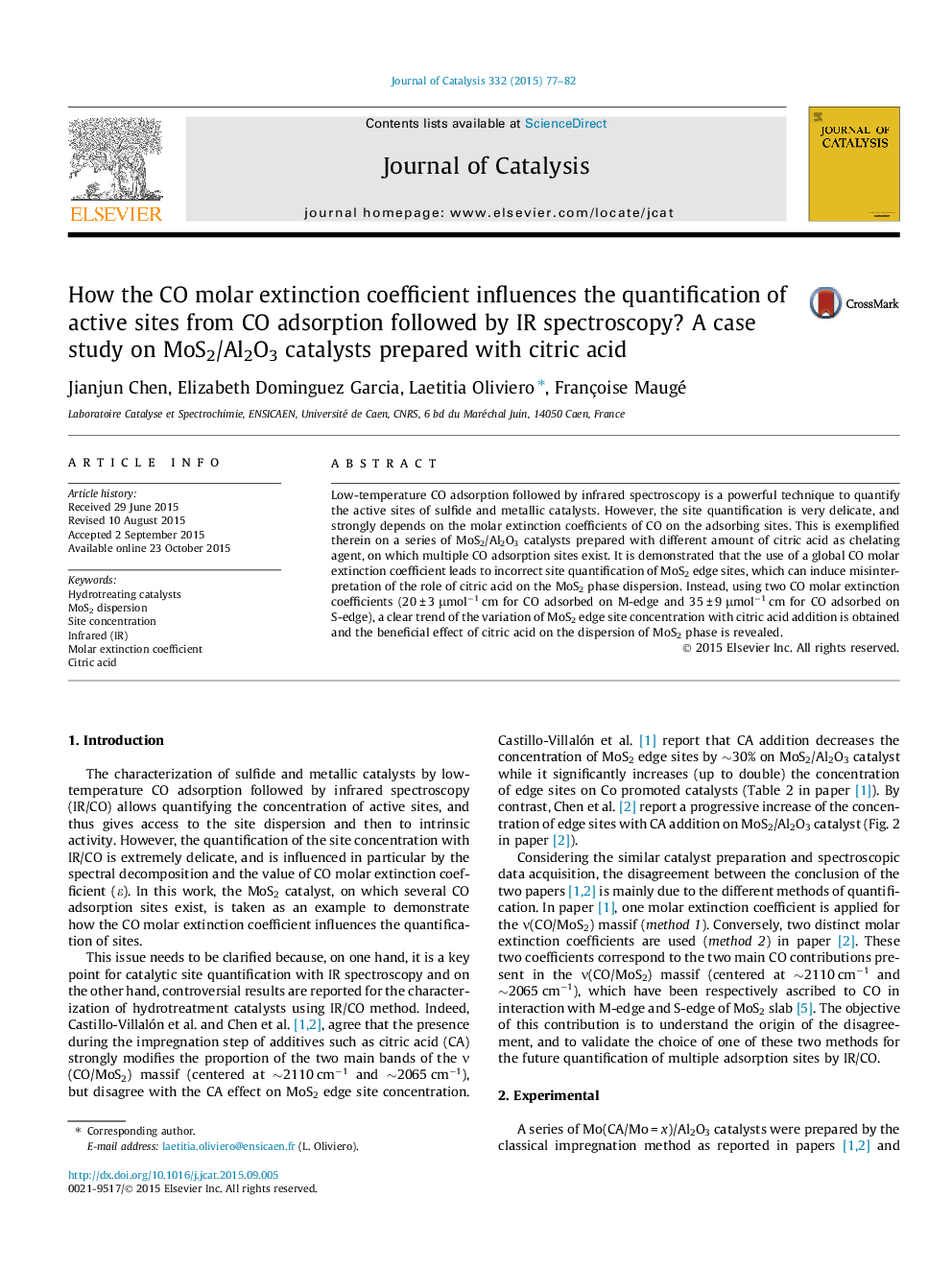| Article ID | Journal | Published Year | Pages | File Type |
|---|---|---|---|---|
| 60725 | Journal of Catalysis | 2015 | 6 Pages |
•Citric acid (CA) addition modifies MoS2 slab morphology (S-edge/M-edge ratio).•Neglecting MoS2 morphology change leads to false IR quantification of edge sites.•Site quantification requires the use of distinct ε values for CO on S- or M-edge.•Then, a clear trend of site concentration variation with CA addition is obtained.•Both TEM and IR results show that MoS2 dispersion increases with CA addition.
Low-temperature CO adsorption followed by infrared spectroscopy is a powerful technique to quantify the active sites of sulfide and metallic catalysts. However, the site quantification is very delicate, and strongly depends on the molar extinction coefficients of CO on the adsorbing sites. This is exemplified therein on a series of MoS2/Al2O3 catalysts prepared with different amount of citric acid as chelating agent, on which multiple CO adsorption sites exist. It is demonstrated that the use of a global CO molar extinction coefficient leads to incorrect site quantification of MoS2 edge sites, which can induce misinterpretation of the role of citric acid on the MoS2 phase dispersion. Instead, using two CO molar extinction coefficients (20 ± 3 μmol−1 cm for CO adsorbed on M-edge and 35 ± 9 μmol−1 cm for CO adsorbed on S-edge), a clear trend of the variation of MoS2 edge site concentration with citric acid addition is obtained and the beneficial effect of citric acid on the dispersion of MoS2 phase is revealed.
Graphical abstractFigure optionsDownload full-size imageDownload high-quality image (131 K)Download as PowerPoint slide
